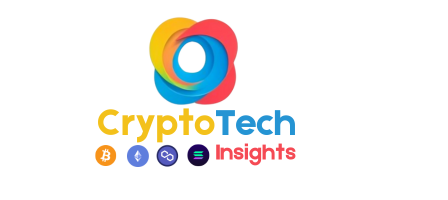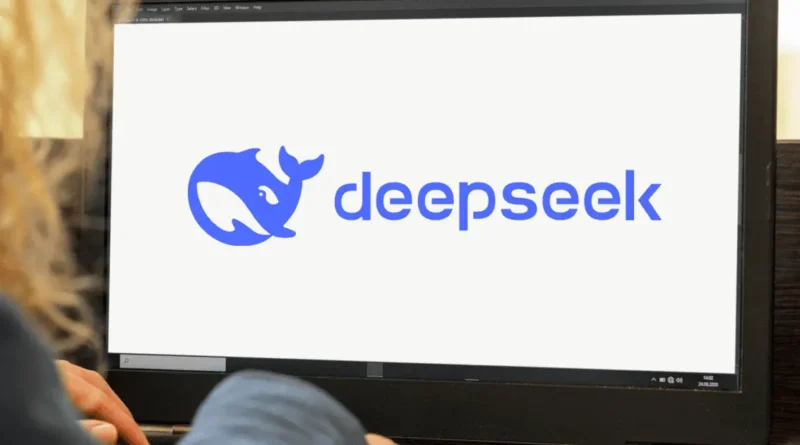The Rise of DeepSeek-R1: Revolutionizing AI with Open-Source Reasoning
Table of Contents
Introduction
In the rapidly evolving landscape of artificial intelligence, the emergence of DeepSeek-R1 has sent ripples through the tech community, positioning it as a game-changer in the realm of reasoning-focused AI models. Developed by the Chinese AI research lab DeepSeek, R1 has quickly garnered fame for its performance, accessibility, and cost-effectiveness, challenging the dominance of industry giants like OpenAI.
What is DeepSeek-R1?
DeepSeek-R1 is an open-source, large language model (LLM) that specializes in reasoning tasks. It’s built on the foundation of DeepSeek’s previous model, DeepSeek-V3, but introduces significant enhancements, particularly in areas like mathematics, coding, and complex problem-solving. Unlike traditional models that might rely heavily on supervised fine-tuning, DeepSeek-R1 leverages a unique blend of reinforcement learning (RL) and hybrid methodologies. This approach allows it to excel in dynamic, complex environments where traditional AI systems often falter.
The model comes in two primary versions:
- DeepSeek-R1-Zero: This version is trained solely through RL, showcasing raw reasoning capabilities but with limitations in readability and coherence.
- DeepSeek-R1 (Hybrid): Combines RL with curated human data for a more balanced output, addressing the readability issues of its predecessor.
Moreover, DeepSeek has released distilled versions of R1, from 1.5B to 70B parameters, making it possible to deploy on consumer hardware, thus increasing its practical applicability.
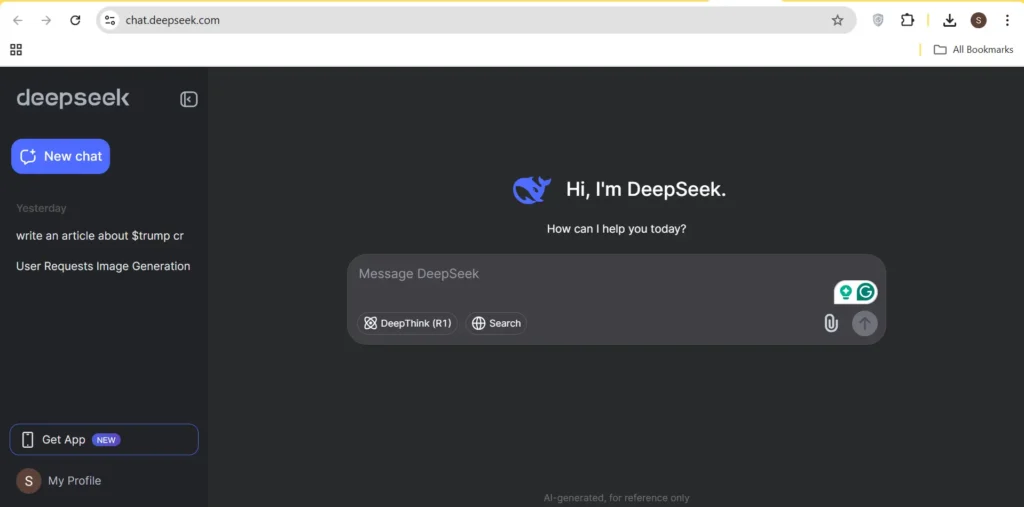
Key Features and Innovations
- Enhanced Learning Algorithms: DeepSeek-R1 uses a hybrid learning system integrating model-based and model-free RL for faster task adaptation and efficiency.
- Multi-Agent Support: It’s designed for scenarios requiring coordination among multiple AI agents, making it ideal for applications like autonomous driving or logistics.
- Explainability: The model includes features for explainable AI, allowing users to see and understand the decision-making process, which is crucial for sectors like healthcare and finance.
- Cost Efficiency: With its API, DeepSeek-R1 is significantly cheaper than competitors like OpenAI’s models, offering a 90-95% cost reduction for similar performance levels.
Why DeepSeek-R1 is Getting Famous
The fame of DeepSeek-R1 can be attributed to several factors:
- Performance and Benchmarking: DeepSeek-R1 has been shown to match or exceed OpenAI’s o1 in various benchmarks like AIME, MATH-500, and Codeforces, despite being developed at a fraction of the cost. Its reasoning capabilities are transparent, providing step-by-step logic invaluable in educational and research settings.
- Open-Source Availability: Under an MIT license, DeepSeek-R1 allows for extensive use, including commercial applications, without stringent restrictions. This openness has democratized access to advanced AI technology, enabling a broader range of developers and researchers to contribute to and benefit from the model’s capabilities.
- Cost Advantage: The model’s pricing model disrupts the market by offering high-end performance at a much lower cost, making advanced AI more accessible to smaller entities or individual developers.
- Innovative Training Techniques: By employing pure RL training or hybrid methods, DeepSeek-R1 demonstrates a new pathway in AI development, potentially setting a precedent for future models. Its ability to improve during runtime, known as test-time computing, further distinguishes it from competitors.
- Global Impact and Recognition: Posts on platforms like X have highlighted DeepSeek-R1’s potential, with users and experts worldwide discussing its implications, from educational tools to business applications, reflecting a global recognition of its capabilities.
Challenges and Considerations
While DeepSeek-R1 has many strengths, it’s not without challenges. There are concerns about its performance under political scrutiny in China, where it must align with “core socialist values,” potentially limiting its freedom in certain sensitive topics. Moreover, the model’s early versions have shown some readability issues, which are being addressed in newer iterations.
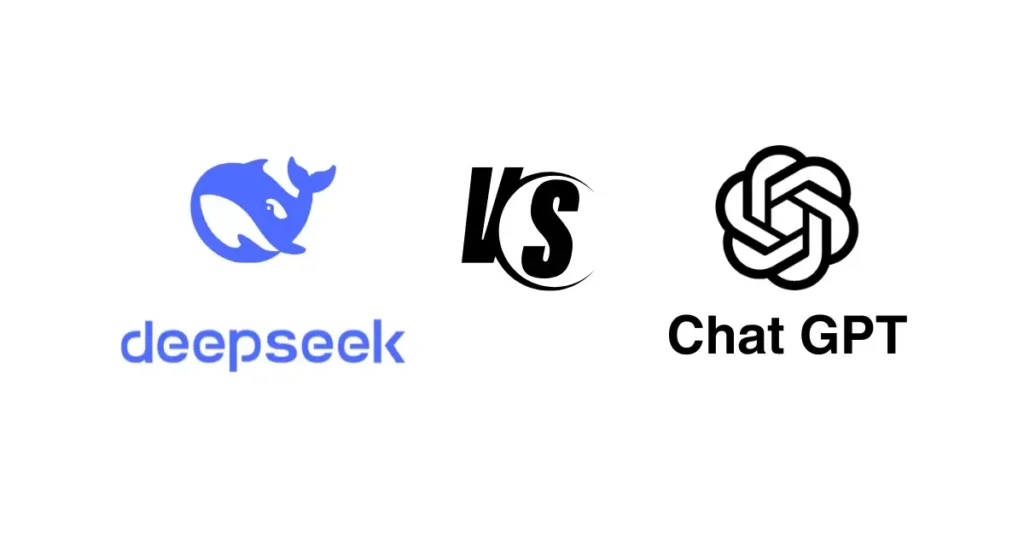
Why People Are Comparing DeepSeek-R1 with ChatGPT
The comparison between DeepSeek-R1 and ChatGPT has become a focal point of discussion within tech circles for several compelling reasons:
1. Performance in Specialized Tasks:
- Reasoning and Problem Solving: DeepSeek-R1 has been designed with a significant emphasis on reasoning and problem-solving capabilities. It outperforms many models, including some versions of ChatGPT, in benchmarks for mathematics, coding, and logical reasoning. Users often compare how each handles complex queries or coding challenges where step-by-step reasoning is crucial.
- Contextual Understanding: While ChatGPT has shown remarkable conversational abilities, DeepSeek-R1’s focus on reasoning allows it to provide more detailed, methodical responses in scenarios requiring deep analysis or logical deduction.
2. Open-Source vs. Closed-Source:
- Accessibility and Control: DeepSeek-R1’s open-source nature contrasts sharply with ChatGPT’s closed-source model. This accessibility allows developers to modify, inspect, and integrate DeepSeek-R1 into various applications freely, leading to comparisons on innovation speed, customization, and transparency.
- Cost and Scalability: Given that DeepSeek-R1 can be run on consumer hardware and offers API access at a significantly lower cost, it represents a direct challenge to the pricing models of services like ChatGPT, which are often subscription-based or require considerable computational resources.
3. Learning and Training Approaches:
- Training Data and Methods: DeepSeek-R1 uses a hybrid of reinforcement learning and supervised learning, which is different from the primarily supervised learning approach used by many versions of ChatGPT. This difference often fuels discussions about each model’s efficiency, bias, and adaptability in various contexts.
- Adaptability: DeepSeek-R1’s ability to learn from interaction and improve during runtime (test-time compute) provides a unique point of comparison with ChatGPT, where such dynamic learning might not be as pronounced or accessible.
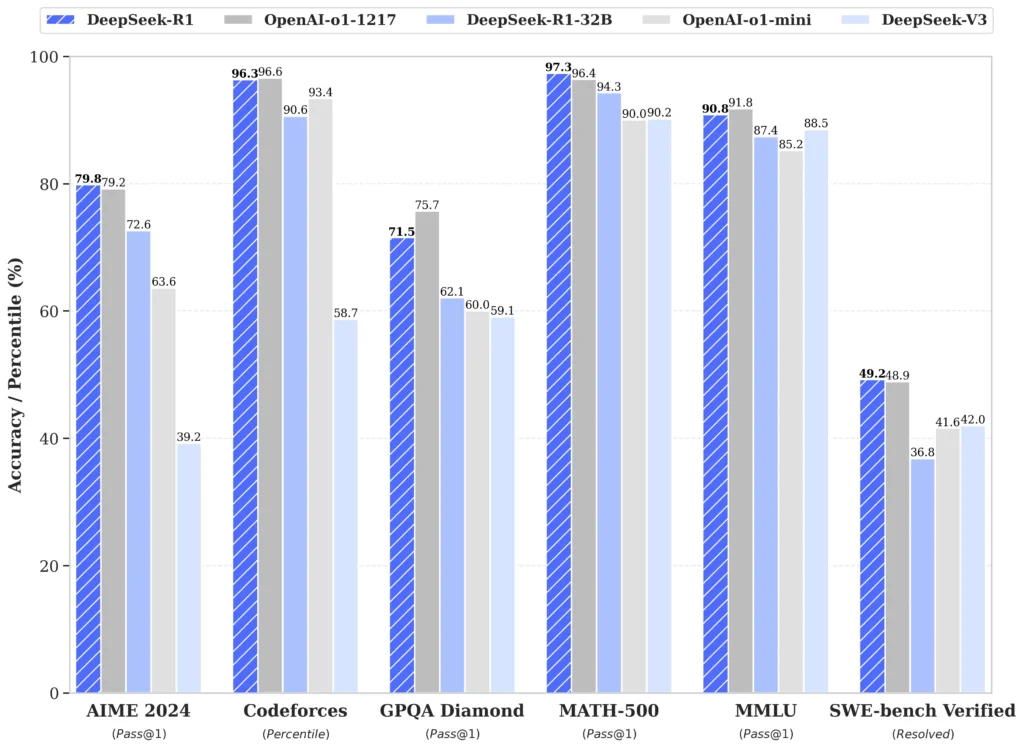
4. Use Case Scenarios:
- Educational Tools: Both models are used in educational contexts, but DeepSeek-R1’s focus on reasoning makes it particularly appealing for teaching complex subjects. Comparisons often revolve around which model better aids in learning and understanding intricate concepts.
- Business Applications: Companies are keen on understanding which model offers better ROI in terms of performance, integration, and cost. DeepSeek-R1’s cheaper operation cost makes it an attractive alternative for businesses.
5. Community and Developer Support:
- Community Engagement: The open-source aspect of DeepSeek-R1 has fostered a community around it, contributing to its development and application. This community-driven evolution is often compared to the proprietary development of ChatGPT, where user input might not directly influence the model’s evolution.
- Innovation: With an open-source model, there’s a faster pace of innovation through community contributions, which is a significant point of comparison with more controlled environments like that of ChatGPT.
6. Cultural and Ethical Considerations:
- Localization and Bias: In regions like China, where DeepSeek-R1 is developed, there’s a natural inclination to compare it with global models like ChatGPT in terms of cultural alignment, language support, and ethical considerations such as alignment with local values or regulations.
7. Price Comparison:
- API Costs: The most striking comparison point is the API pricing. DeepSeek-R1 offers its services at a fraction of the cost of ChatGPT. For instance, while OpenAI’s o1 model charges $60 per million output tokens, DeepSeek-R1’s API is priced at only $2.19 per million output tokens, making it approximately 96% cheaper.
- Subscription Models: ChatGPT often operates on a subscription basis (like ChatGPT Plus at $20/month), whereas DeepSeek-R1 provides its core functionalities for free or through very low-cost APIs. This cost difference is a significant factor in why people compare these models, particularly for those on tight budgets or looking for scalable solutions without high ongoing costs.
- Investment and Development Costs: DeepSeek-R1 was reportedly developed with an investment of about $5.6 million, in stark contrast to the billions spent by OpenAI on models like ChatGPT. This disparity in development costs while achieving comparable or superior performance in certain areas adds another layer to the price comparison narrative.
These comparisons are not just about which AI is “better” but about understanding the implications of AI design, ethics, accessibility, and application in real-world scenarios. As both models continue to evolve, these discussions will likely deepen, influencing how AI technologies are perceived, utilized, and regulated globally.
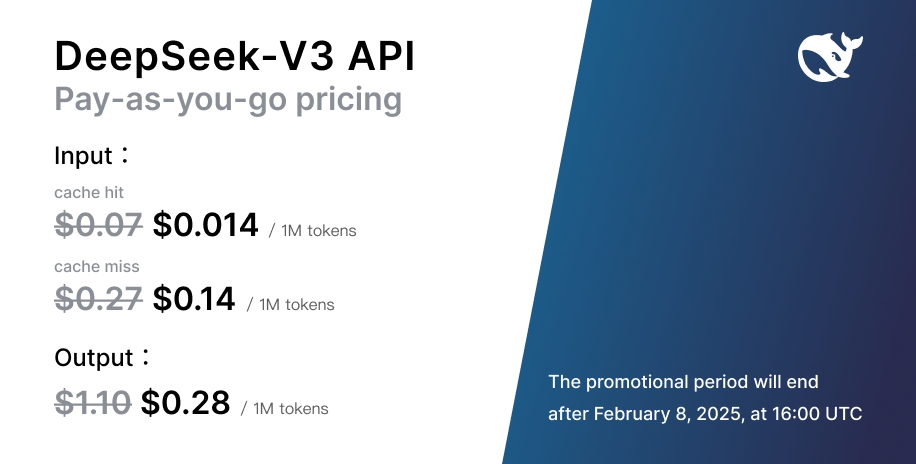
Conclusion
DeepSeek-R1 represents a pivotal moment in AI development, particularly for reasoning models. Its blend of affordability, high performance, and open-source philosophy could dictate the future direction of AI research and application. As the AI community continues to explore and expand upon DeepSeek-R1’s capabilities, it stands as a testament to the potential of open-source initiatives in pushing technological boundaries forward. With its ongoing integration into various sectors, DeepSeek-R1 is not just getting famous; it’s setting the stage for a new era in AI.
FAQs on DeepSeek-R1
-
What is DeepSeek-R1?
DeepSeek-R1 is an open-source artificial intelligence model developed by DeepSeek, a Chinese AI research lab. It’s designed to excel in reasoning tasks, including mathematics, coding, and complex problem-solving, offering both a pure reinforcement learning version (R1-Zero) and a hybrid model for enhanced usability.
-
How does DeepSeek-R1 differ from models like ChatGPT?
-
Is DeepSeek-R1 free to use?
The core model of DeepSeek-R1 is available for free under an MIT license, which allows for both personal and commercial use. However, accessing the model through APIs or specialized services might involve costs, albeit much lower than similar services for other models.
-
Can I run DeepSeek-R1 on my personal computer?
-
What are the performance benchmarks for DeepSeek-R1?
DeepSeek-R1 has shown competitive or superior performance in benchmarks like AIME 2024 for mathematics, MATH-500 for complex problem-solving, and Codeforces for coding, with results sometimes surpassing those of comparable models like OpenAI’s o1.
-
How does DeepSeek-R1 handle privacy and security?
Being open-source, DeepSeek-R1 allows users to inspect the model’s code for security. However, like any AI system, there are considerations around data privacy when using hosted services or APIs. Users should ensure they use secure practices and understand the model’s handling of data.
-
What languages does DeepSeek-R1 support?
-
What are the limitations of DeepSeek-R1?
Some limitations include challenges with readability in its initial versions, potential alignment with Chinese political values affecting its use in sensitive topics, and it might not match conversational AI in everyday chat scenarios. These are areas where ongoing development is addressing issues.
-
Where can I find DeepSeek-R1’s code or use its services?
The model’s code, including various versions, can be found on platforms like Hugging Face. For services, you can access DeepSeek-R1 through their website, mobile apps, or via API, which is compatible with many applications.
-
Is DeepSeek-R1 suitable for educational purposes?
Yes, due to its strong reasoning capabilities, DeepSeek-R1 is particularly useful in educational settings for teaching complex subjects like mathematics and programming, where step-by-step reasoning is beneficial
-
Is DeepSeek-R1 better than ChatGPT?
Whether DeepSeek-R1 is “better” than ChatGPT depends on the context of use:
For Reasoning and Problem-Solving: DeepSeek-R1 excels, especially in areas like mathematics, coding, and logical tasks, often outperforming ChatGPT in these benchmarks.
For Conversational AI: ChatGPT might be preferred for its conversational fluency and broad language understanding, especially in everyday, casual interactions.
Cost and Accessibility: DeepSeek-R1 is significantly more cost-effective with its open-source model and cheaper API, making it more accessible for a wider range of applications or users with budget constraints.
Customizability: The open-source nature of DeepSeek-R1 allows for greater control and customization, potentially leading to better-tailored solutions for specific needs.
Community and Innovation: DeepSeek-R1 benefits from community contributions, which can lead to faster innovation and adaptation to new challenges.
Cultural and Ethical Fit: Depending on the geographical or cultural context, DeepSeek-R1 might be more aligned with local values or requirements, particularly in China, while ChatGPT might have broader global alignment due to its widespread use.In summary, “better” is subjective and based on specific requirements. DeepSeek-R1 might be the preferred choice for tasks requiring deep reasoning, while ChatGPT could be better for conversational engagement or when cost is not a primary concern.
